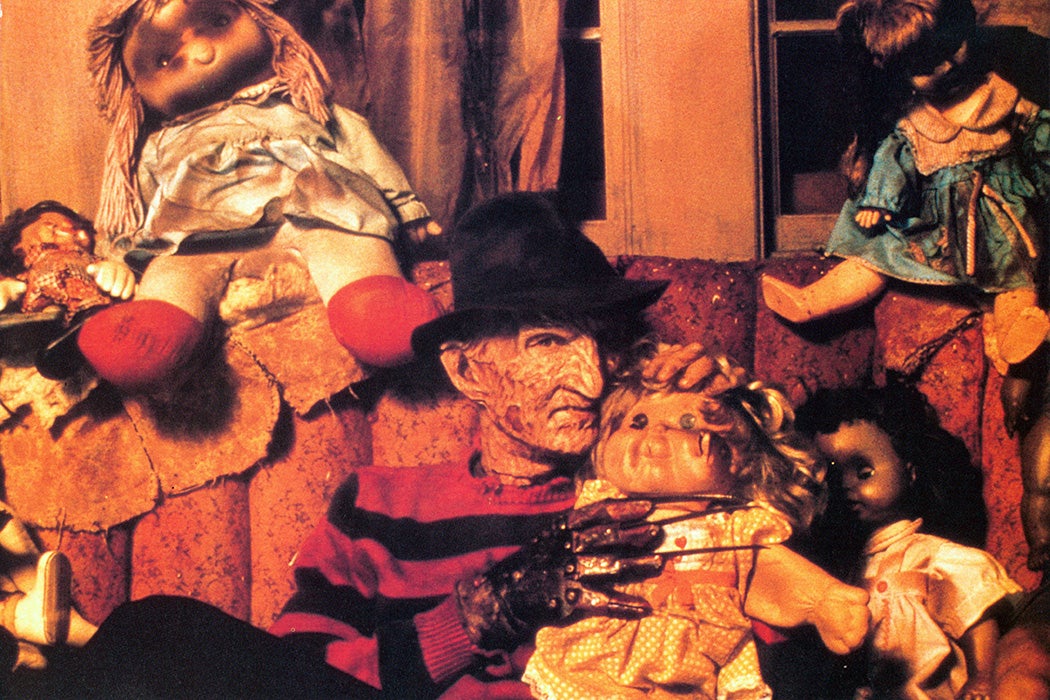Teen slasher films may be widely viewed as a trashy kind of entertainment with little artistic value. But folklorist Karra Shimabukuro argues that we should take them seriously as a version of the storytelling traditions that humans have always used to make sense of life. In particular, she locates the folkloric figure of the bogeyman in Freddy Krueger, as portrayed in Wes Craven’s A Nightmare on Elm Street (1984) and the franchise’s 2010 reboot.
Shimabukuro writes that the bogeyman appeared in German fairy tales in forms that included creatures known as bögge and St. Nicholas’s troublesome sidekick Kraumpus. These frightening figures were always connected with the kidnapping, abuse, or punishment of children. This is one version of a motif that appears in folklore around the world—supernatural entities that are often shape-changing, cannibalistic, and ready to punish those who transgress cultural boundaries, including children who suffer for the sins of their parents.
Shimabukuro argues that unlike the monsters of other teen slashers—Michael Myers of Halloween and Jason Voorhies of Friday the 13th, for instance—Freddy inhabits the bogeyman identity by killing for revenge and taking pleasure in elaborate methods of torture. The fact that he operates in the dreams of his victims, and sometimes shifts shape, ties him to supernatural evil rooted in the collective consciousness of the culture.
“The ‘living nightmare’ aspect that comes to life to punish bad children/people is a main element of Krueger’s folkloric roots as a bogeyman,” she writes.
Shimabukuro cites historian Marina Warner, who argues that, historically, as child mortality fell, the figure of the bogeyman became identified with sexual abusers of children. This also tracks with Nightmare. In Craven’s original script, Freddy originated as a child molester who was caught and burned to death by angry parents. But, due to a coincidental child abuse scandal that occurred in California while the movie was in production, he was written as a child murderer instead.
The 2010 version restored the element of sexual violence and doubled down on the theme of young children being harmed. The opening credits feature children playing hop-scotch and jump rope, and the plot is set in motion when the teenage protagonists begin to remember being abused as preschoolers.
Shimabukuro argues that not only does Freddy have his origins in folklore but, in fact, his story is folklore. Although he was invented as a movie character, he—like Michael Myers and Jason Voorhies—has become a figure everyone knows, even if they’ve never watched slashers. Like every good bogeyman, he haunts the nightmares of people in the real world.







